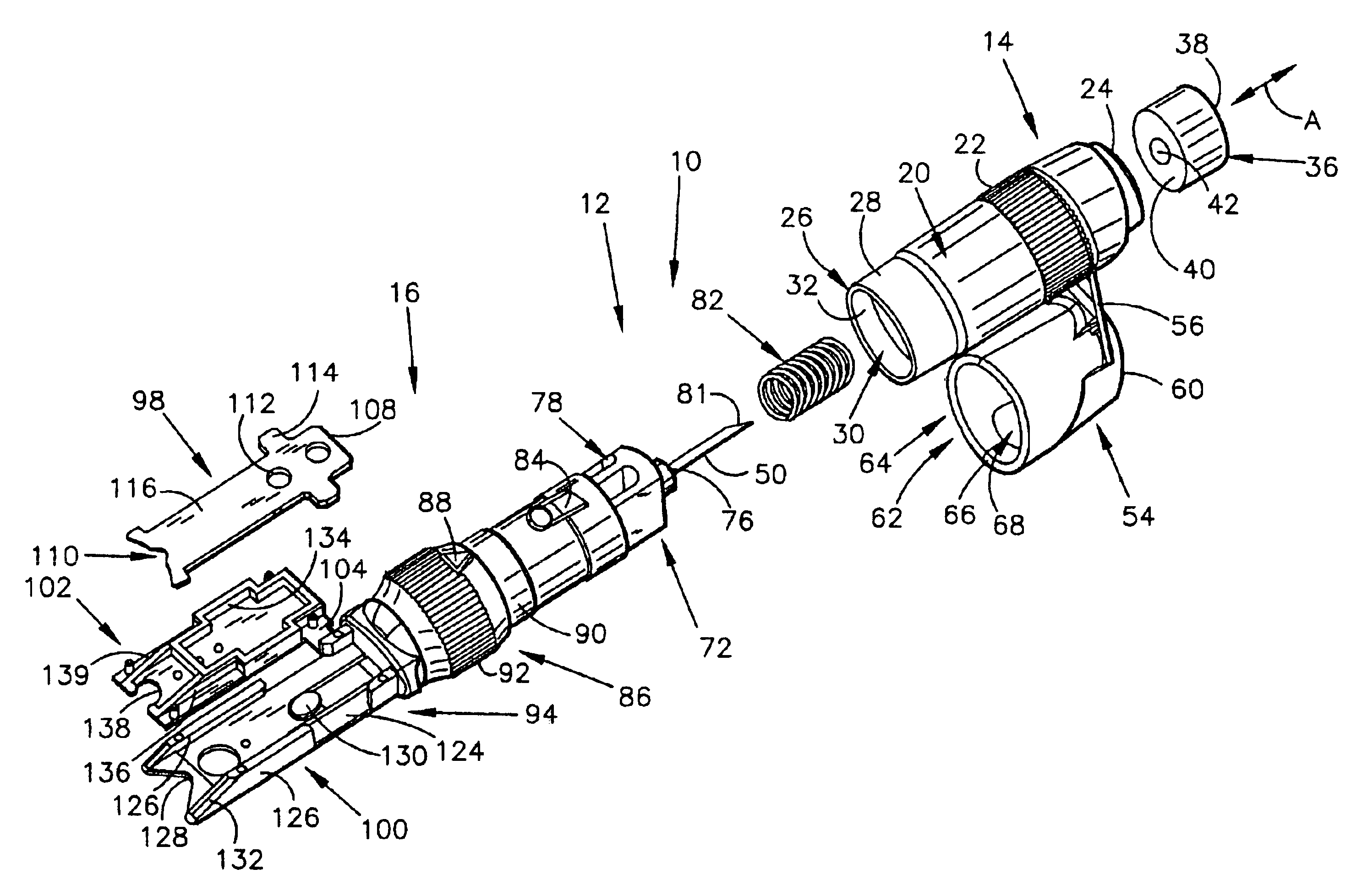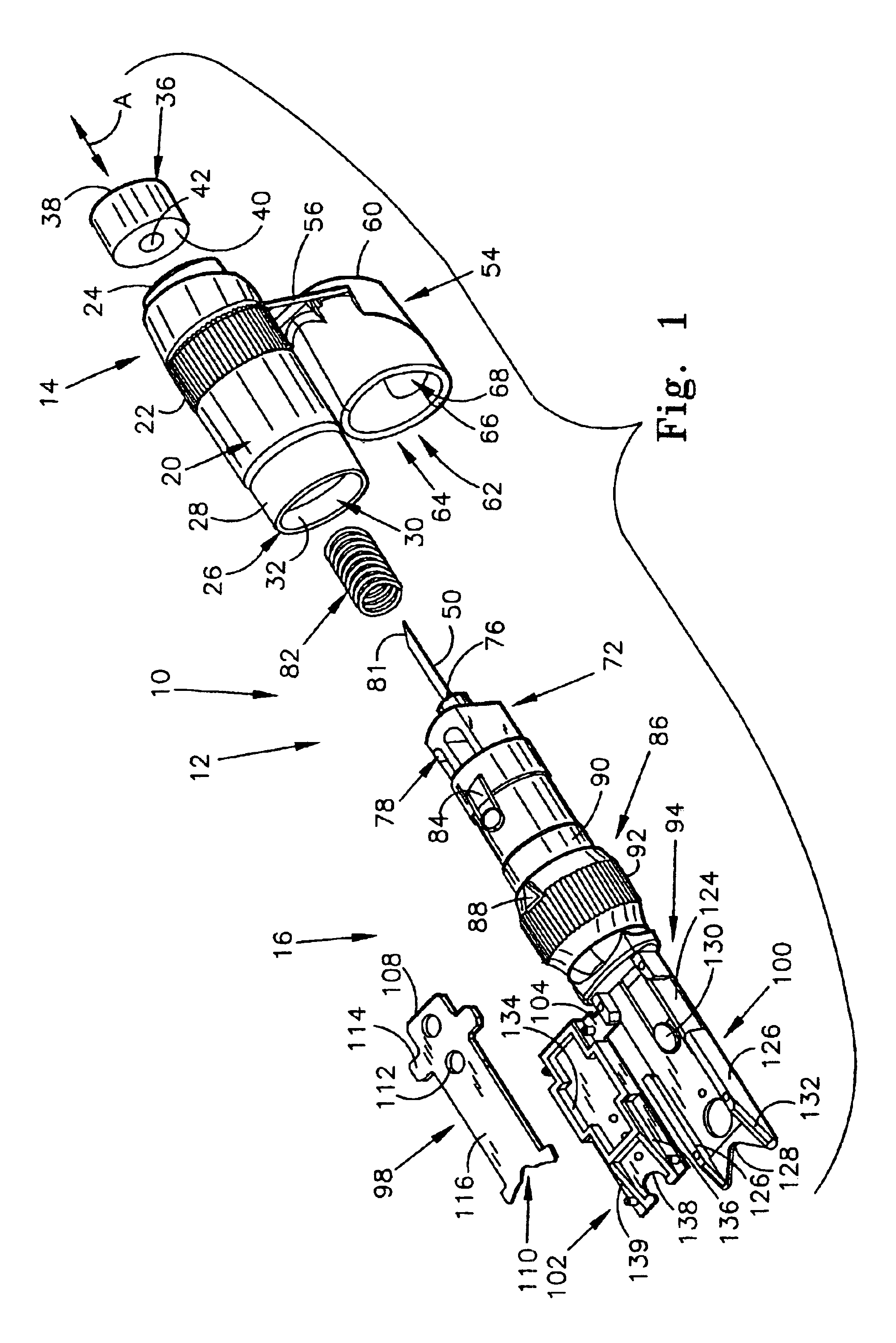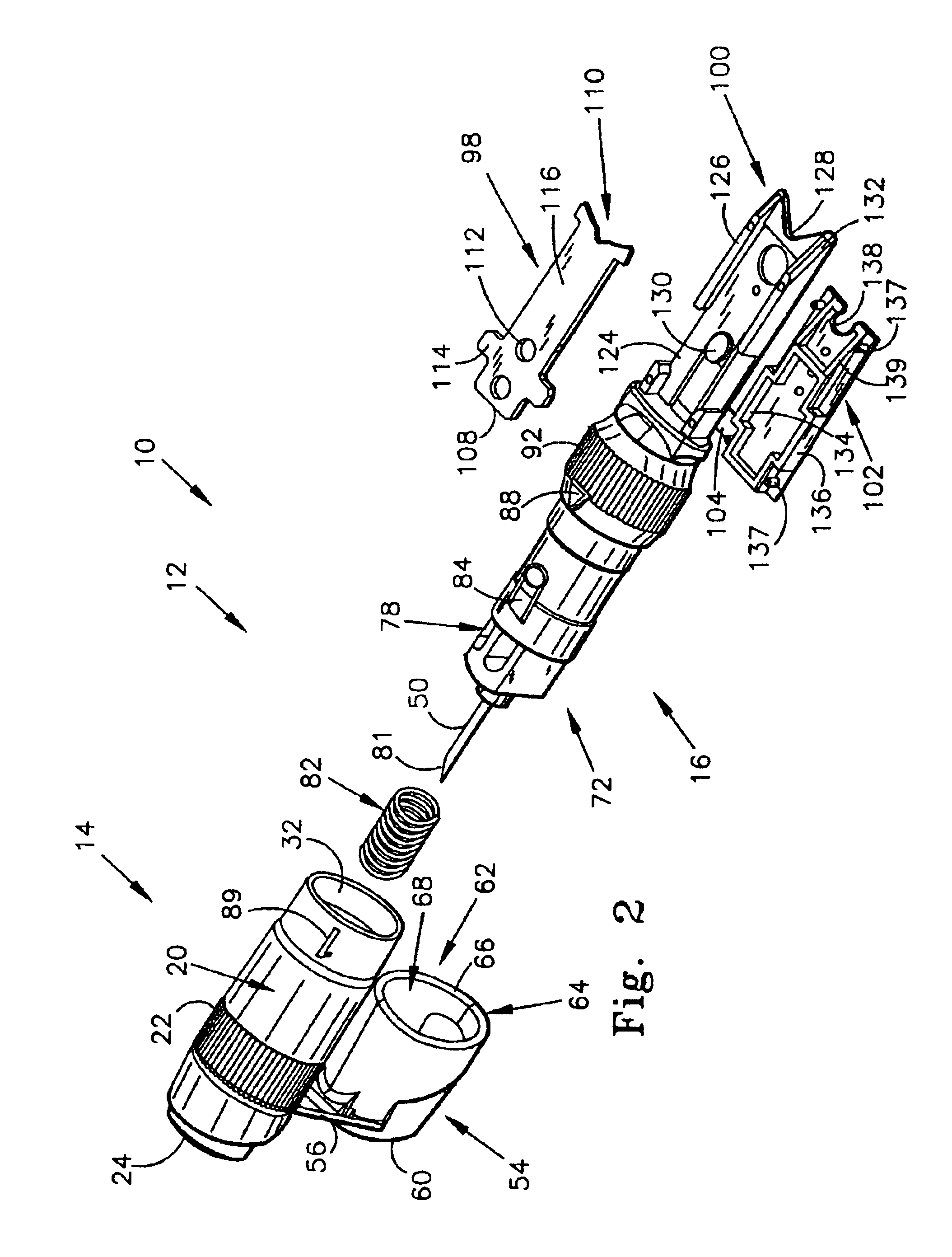Consolidated body fluid testing device and method
a body fluid and testing device technology, applied in the field of methods and devices for testing analysis fluids, can solve the problems of limited market size, limited features for consumers and users, and limited current system for glucose measurement, so as to facilitate ease and speed of performance, enhance the flow of blood, and reduce product clutter
- Summary
- Abstract
- Description
- Claims
- Application Information
AI Technical Summary
Benefits of technology
Problems solved by technology
Method used
Image
Examples
Embodiment Construction
54]FIG. 6 is another perspective view of the first alternate embodiment of the present invention;
[0055]FIG. 7a is a schematic flowchart illustrating the steps necessary to perform a blood test using the prior art;
[0056]FIG. 7b is a flowchart illustrating the steps necessary to perform a blood test using the testing device of the present invention;
[0057]FIG. 8 is a bottom view of the first alternate embodiment of the present invention;
[0058]FIG. 9 is a top view of the first alternate embodiment of the present invention;
[0059]FIG. 10 is a side view of the first alternate embodiment of the present invention;
[0060]FIG. 11 is a perspective view, illustrating the pressure cap of the present invention;
[0061]FIG. 12 is a perspective view, wherein the pressure cap in its open position, and the cleansing swab is exposed;
[0062]FIG. 13 is a perspective view, similar to FIG. 12, but with the cleansing swab removed to illustrate the cleansing swab receiving chamber;
[0063]FIG. 14 is a top view the...
PUM
 Login to View More
Login to View More Abstract
Description
Claims
Application Information
 Login to View More
Login to View More - R&D
- Intellectual Property
- Life Sciences
- Materials
- Tech Scout
- Unparalleled Data Quality
- Higher Quality Content
- 60% Fewer Hallucinations
Browse by: Latest US Patents, China's latest patents, Technical Efficacy Thesaurus, Application Domain, Technology Topic, Popular Technical Reports.
© 2025 PatSnap. All rights reserved.Legal|Privacy policy|Modern Slavery Act Transparency Statement|Sitemap|About US| Contact US: help@patsnap.com



